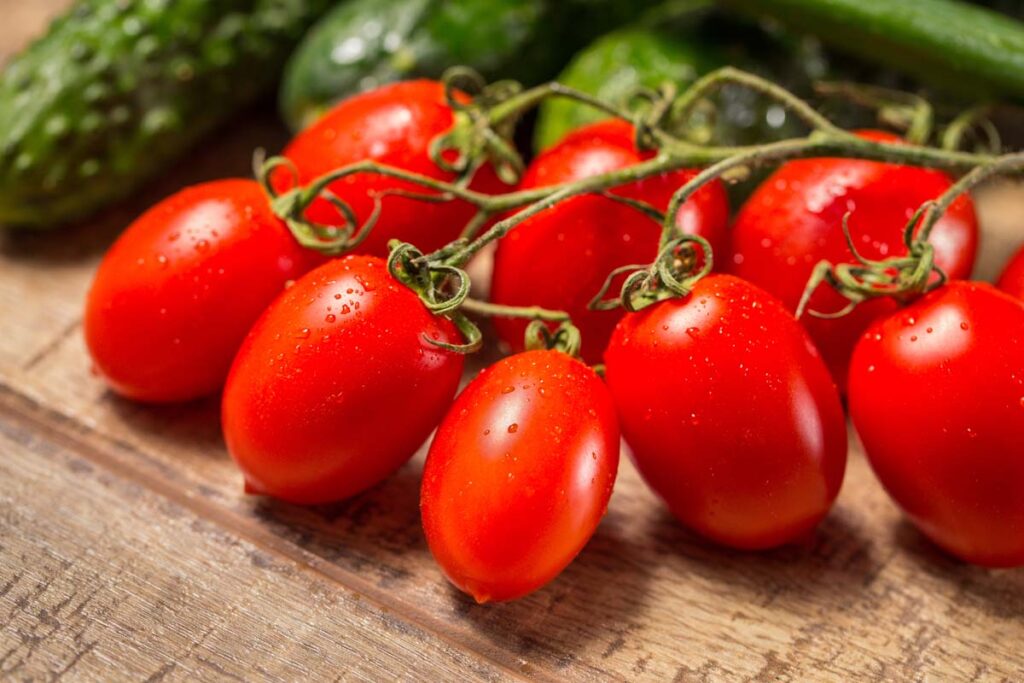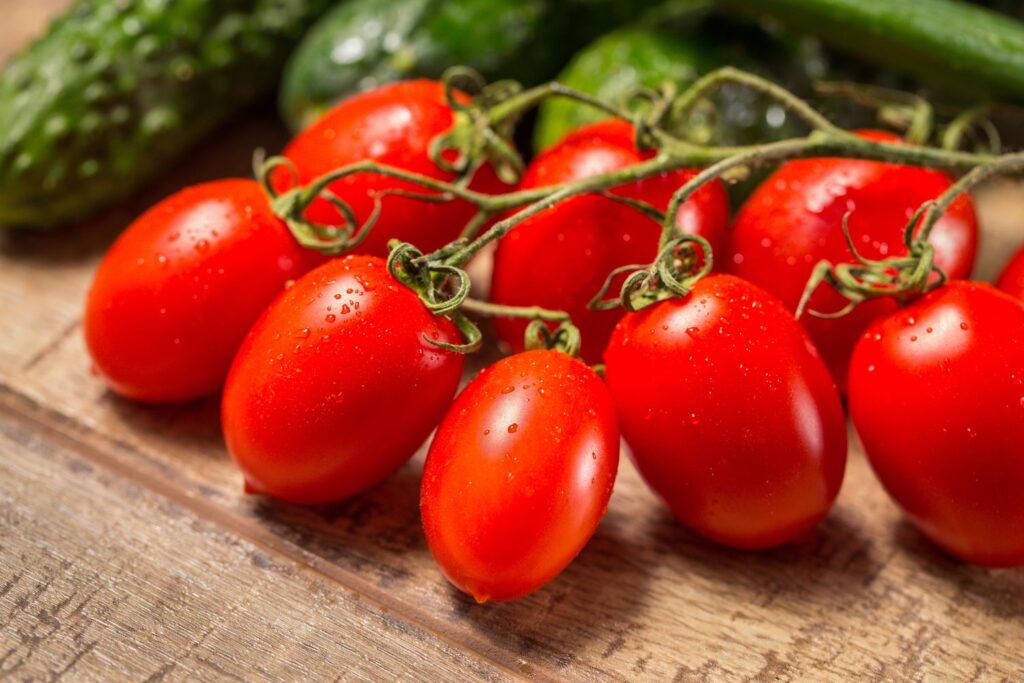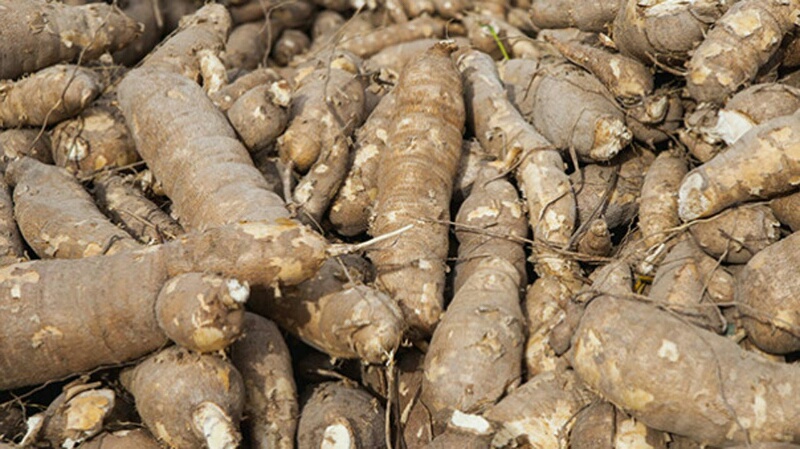Okay, let’s talk about getting those incredible harvests of juicy Roma tomatoes! You want to know the real secret? It’s all about how much space do Roma tomatoes need to grow. Trust me, getting the Roma tomato spacing just right is a total game-changer for healthy plants and an abundant yield. It’s not just about sticking them in the ground; it’s about giving them room to breathe and thrive. And honestly, it makes plant care so much easier down the line. Achieving the optimal spacing for Roma tomatoes is our main goal!
Understanding Tomato Growth Habits: Determinate vs. Indeterminate
Before we dive into spacing, it’s helpful to understand a little about how tomato plants grow. The two main types are determinate and indeterminate.
- Determinate tomatoes grow to a specific size, produce their fruit in a relatively short period, and then stop growing. They are often bushier and more compact. Most Roma tomatoes fall into this category.
- Indeterminate tomatoes keep growing, flowering, and producing fruit until frost kills them. They can get much larger and require more substantial support.
Knowing which type you’re growing will influence the best spacing.
Why Does Giving Roma Tomatoes Elbow Room Even Matter?
You might think, “More plants crammed in means more tomatoes, right?” But here’s the thing, that’s actually a recipe for disappointment. Proper Roma tomato plant distance is absolutely crucial. Why, you ask? Well, getting the spacing right offers several key benefits:
- Prevents Disease: Proper spacing improves air circulation, which helps leaves dry faster and reduces the risk of fungal diseases that thrive in damp conditions.
- Ensures Sunlight: Adequate space means each plant gets enough direct sunlight (6-8 hours daily) for strong growth and fruit production, preventing weak, leggy plants.
- Allows Root Growth: Roots need room to spread out and access water and nutrients in the soil. Cramped roots lead to stressed plants and lower yields.
So, giving them room isn’t just nice; it’s essential for unlocking their full potential and directly impacts your Roma tomato yield. Finding the minimum space needed for Roma tomatoes is key to letting them flourish.
So, How Much Space Do Roma Tomatoes Need to Grow for a Healthy Yield?
Alright, the million-dollar question! While there’s no single “magic number” that works for every single situation (we’ll get into why in a bit), there are solid guidelines that professional growers and experienced gardeners swear by. Generally, you’re looking at giving your Roma tomato plants about 2 to 3 feet of space between them. This is part of achieving optimal spacing Roma tomatoes.
This might sound like a lot, especially if you’re gardening in a small area, but this Roma tomato plant distance allows for good airflow, reduces competition for resources, and gives the plants room to develop strong root systems and bushy foliage capable of supporting a heavy fruit set. Think of it as an investment in your harvest!
Now, let’s break this down by where you’re planning to plant them because the method definitely changes the math.
Recommended Roma Tomato Spacing by Planting Method
Okay, let’s get specific about the numbers for getting the distance right. The ideal Roma tomato spacing varies slightly depending on whether they’re going into the ground, a raised bed, or a container. But don’t sweat it; it’s pretty straightforward. Achieving the best spacing for Roma tomatoes requires looking at your specific setup.
In the Ground: How Far Apart To Plant Roma Tomatoes
If you’re planting directly into your garden soil, the standard recommendation for how far apart to plant Roma tomatoes is typically 24 to 36 inches (about 2 to 3 feet) between plants. This generous spacing is particularly important for indeterminate varieties, which just keep growing and growing! Even for determinate types, this provides the necessary minimum space for Roma tomatoes to thrive.
When planning your rows, consider Roma tomato row spacing as well. Leaving about 3 to 4 feet between rows gives you room to walk, weed, and harvest without stepping on your plants, plus it further improves air circulation. For instance, Southern Living recommends spacing staked tomatoes 18 to 24 inches apart in rows that are 3 to 4 feet apart (Source: Southern Living)
In Raised Beds: How Far Apart To Plant Roma Tomatoes In Raised Beds
Raised beds are fantastic for drainage and soil control, but space can be a bit more limited. So, how far apart to plant Roma tomatoes in raised beds? You can often get away with slightly closer spacing here, around 24 to 30 inches between plants. This is the recommended Roma tomato raised bed spacing.
Why a little closer? Raised beds often have better-drained soil, which can help mitigate some disease risks associated with closer planting. Plus, you have more control over the soil fertility, ensuring plants get the nutrients they need even with roots a bit closer together. Still, don’t overcrowd them! That 24-inch minimum is still pretty important for good airflow and light penetration.
In Pots and Containers: How Far Apart To Plant Roma Tomatoes In Pots and Containers
Container gardening is super popular, and yes, you can absolutely grow amazing Roma tomatoes in pots! But how far apart to plant Roma tomatoes in pots? This is a bit different because you’re usually planting just one plant per pot. The key here isn’t the distance between plants, but the size of the pot itself. This is where Roma tomato container spacing and choosing the right container size Roma tomatoes need becomes critical.
Roma tomatoes need a decent amount of root space to support all that top growth and fruit production. I recommend using a container that holds at least 5 gallons of soil per plant. A 10-gallon pot is even better if you have the space! This gives the roots plenty of room to explore, access moisture, and anchor the plant as it gets heavy with fruit. Make sure the pot has good drainage holes, too!
What Stuff Affects How Much Space Roma Tomatoes Need?
Okay, so we’ve covered the general guidelines, but gardening is rarely one-size-fits-all, right? A few key factors totally influence the ideal Roma tomato spacing. Understanding these helps you make the best decision for your specific garden setup and achieve optimal spacing Roma tomatoes.
Determinate vs. Indeterminate Roma Tomatoes: Does It Matter?
Absolutely, yes! This is a big one. Roma tomatoes are typically determinate varieties. What does that mean? Determinate tomatoes grow to a specific size, produce their fruit in a relatively short period, and then stop growing. They’re often bushier and more compact.
Indeterminate tomatoes, on the other hand, keep growing, flowering, and producing fruit until frost kills them. They can get huge!
Since most Roma tomatoes are determinate, they generally don’t need quite as much sprawling room as their indeterminate cousins. This is why the 2-3 foot spacing works well. If you happen to find an indeterminate Roma variety (they exist, but are less common), you might lean towards the wider end of that spacing range, maybe 3 feet between plants, to accommodate their larger size. Always check the plant tag or seed packet to know what type you’re growing! Knowing the type helps determine the minimum space for Roma tomatoes.
Climate and Environmental Conditions: How They Influence Spacing
Your local weather plays a role, too. In hot, humid climates, increasing the Roma tomato plant distance slightly can be a lifesaver. Better airflow helps leaves dry faster after rain or heavy dew, significantly reducing the risk of fungal diseases that thrive in damp conditions. Think about it: a nice breeze is good for everyone, including your tomato plants!
Conversely, in drier climates, you might slightly decrease spacing (staying within the recommended range, of course) to help the plants shade the soil a bit, keeping the root zone cooler and reducing water evaporation. It’s a subtle difference, but it can help conserve moisture.
Soil Quality and Fertility: How Much Space Does It Need for Optimal Growth?
Rich, fertile soil can support more vigorous growth, meaning plants might fill in their space more quickly. If your soil is less than ideal, plants might grow slower and stay smaller, potentially allowing for slightly closer spacing – but you still need to ensure they have enough room to access the limited nutrients available.
Honestly, instead of using poor soil as an excuse to plant closer, I’d focus on improving your soil first! Adding compost or well-rotted manure before planting gives your plants the best possible start and supports healthy growth, regardless of spacing. Good Roma tomato soil fertility is key to maximizing that Roma tomato yield.
Oops! Common Spacing Mistakes and How to Dodge Them
Even experienced gardeners make mistakes! When it comes to Roma tomato spacing mistakes, a few common blunders can really hurt your harvest. But don’t worry, they’re easy to avoid once you know what to look for. Avoiding these mistakes helps you achieve optimal spacing Roma tomatoes.
Overcrowding Roma Tomato Plants: Why It’s a Bad Idea
This is probably the most frequent mistake I see. Overcrowding Roma tomato plants seems logical – more plants equals more fruit, right? Wrong! As we discussed, cramming plants together leads to poor air circulation, increased disease risk, competition for light and nutrients, and ultimately, reduced yield and unhappy plants.
It’s just not worth it. You’ll get fewer, lower-quality tomatoes from stressed, overcrowded plants than from fewer, properly spaced, healthy ones. Seriously, resist the urge to plant too close!
You know, I remember vividly one season, early on in my gardening adventures, I was just so excited to get as many Roma tomato plants in the ground as possible. I thought, “More plants, more tomatoes, right? Simple math!”
So, I totally ignored the recommended spacing and planted them way too close together. Everything looked fine at first, but as they grew, it became a dense, tangled jungle. Air couldn’t get through, and wouldn’t you know it, that’s the year I battled early blight like never before. It spread like wildfire through the overcrowded plants.
My yield was pathetic, and the tomatoes I did get weren’t the best quality. It was a tough lesson, but it really hammered home why that proper Roma tomato spacing is so incredibly important. It’s not about fitting the most plants; it’s about giving each plant the best chance to be healthy and productive. That season taught me the hard way that giving them that minimum space for Roma tomatoes isn’t optional; it’s essential.
Ignoring Support Structures for Roma Tomatoes: A Recipe for Disaster
Roma tomatoes, especially the determinate types, can get heavy when loaded with fruit. Ignoring Roma tomato support structures is a big mistake. Without support, the heavy branches can flop over, breaking or resting on the soil, which makes them vulnerable to pests and diseases.
Staking, caging, or trellising your Roma tomatoes is essential. Install these supports at planting time so you don’t damage the roots later. Proper spacing makes installing these supports much easier and gives you room to tie up branches as the plant grows.
Poor Air Circulation: How It Affects Roma Tomato Growth
This ties back to overcrowding, but it’s worth highlighting on its own. Roma tomato air circulation is non-negotiable for healthy plants. Stagnant, humid air around the leaves is an open invitation for fungal diseases like early blight or Septoria leaf spot.
Proper spacing is the primary way to ensure good airflow. Additionally, pruning the lower leaves (those touching the soil) and any yellowing or diseased leaves helps improve circulation within the plant itself. This simple step can make a huge difference in preventing disease outbreaks.
Got Questions About Roma Tomato Spacing?
You’ve got questions, and I’ve got answers! Here are a few common ones about Roma tomato spacing and care that pop up.
Is 18 inches Enough Space for Roma Tomatoes?
Probably not, honestly. While some sources might suggest it for very compact determinate varieties or under ideal conditions with excellent airflow and soil, it’s generally too tight. You’re significantly increasing the risk of disease and reducing potential yield due to competition. I’d stick closer to that 24-inch minimum for better Roma tomato growth requirements. This is often below the minimum space for Roma tomatoes to truly thrive.
Can I Plant Roma Tomatoes Closer if I Prune Them Heavily?
Pruning can help improve airflow within the plant itself. However, it doesn’t eliminate the need for adequate space between plants. You still need room for overall air circulation and healthy root development. Don’t rely solely on pruning to fix overcrowding issues. Proper initial Roma tomato spacing is key from day one.
Does Spacing Affect How Much I Need to Water?
Yes, indirectly, it does. Properly spaced plants have better airflow. This can mean the soil surface dries a bit faster. But the plants themselves are healthier. They are better able to take up water when they need it. Overcrowded plants create a dense canopy. This keeps the soil surface too wet, inviting disease. Or, conversely, they compete so much for water that they dry out quickly. Good spacing supports healthy Roma tomato water needs.
How Does Spacing Help Prevent Pests and Diseases?
Proper spacing makes it harder for pests to jump from plant to plant. When plants are crowded, pests can spread like wildfire. Good Roma tomato plant distance helps you spot pest problems sooner, too. You can take action before they infest your entire crop. Adequate spacing also promotes better airflow, which is crucial for preventing fungal diseases that thrive in humid conditions. Giving plants adequate space is a key practice for preventing common issues like early blight and Septoria leaf spot(Source: University of Maryland Extension).
What Kind of Soil Preparation is Best for Roma Tomatoes?
Roma tomatoes love loose, rich soil. Good soil preparation is vital for supporting the recommended Roma tomato spacing. You want soil that drains well. It should also be packed with nutrients. Mix in aged manure or compost before planting. Digging the soil about a foot deep helps improve drainage and aeration. This encourages a robust root system. Tomatoes prefer a slightly acidic soil with a pH of about 6.2 to 6.8. Adding organic matter like compost improves soil structure and fertility (Source: Penn State Extension).
Conclusion: Maximizing Your Roma Tomato Harvest Through Proper Spacing
So there you have it. Getting the Roma tomato spacing right is arguably one of the most important steps you can take for a thriving garden and a fantastic harvest. It impacts everything from disease prevention and Roma tomato air circulation to how well your plants access sunlight, water, and nutrients. Achieving optimal spacing Roma tomatoes truly makes a difference.
Final Tips for Roma Tomato Success
Beyond spacing, remember these things for solid Roma tomato plant care:
- Sunlight: Roma tomatoes need full sun – at least 6-8 hours daily.
- Soil: Use well-draining soil rich in organic matter. Good Roma tomato soil fertility is crucial.
- Watering: Water deeply and consistently at the base of the plant. Avoid overhead watering. This can encourage disease. Pay attention to Roma tomato water needs, especially during dry spells. Consistent watering also helps prevent blossom end rot.
- Support: Always stake, cage, or trellis your plants early on. Install Roma tomato support structures at planting time.
- Pruning: Prune lower leaves and any yellowing or diseased foliage. This improves airflow and plant health. Consider Roma tomato pruning as part of your regular care routine. Pruning suckers also helps manage growth.
- Fertilizing: Feed your plants with a balanced tomato fertilizer. Do this as they grow and start producing fruit. Avoid high-nitrogen fertilizers. They promote leaves but delay fruit.
Key Takeaways for Planting Roma Tomatoes with Optimal Spacing
Remember these points when deciding how far apart to plant Roma tomatoes:
- Aim for 24-36 inches between plants in the ground.
- In raised beds, 24-30 inches is usually sufficient. This is how far apart to plant roma tomatoes in raised beds.
- For container gardening, use one plant per pot. The pot should be at least 5-10 gallons. This is your Roma tomato container spacing, and choosing the right container size Roma tomatoes need is vital.
- Consider if you’re growing determinate or indeterminate varieties. Most Romas are determinate. Knowing this helps determine the minimum space for Roma tomatoes.
- Factor in your climate. Wider spacing in humid areas is beneficial for Roma tomato air circulation.
- Never overcrowd! It leads to Roma tomato plant overcrowding issues like disease and reduced yield.
- Install Roma tomato support structures at planting time.
- Good spacing promotes excellent Roma tomato air circulation. It also helps reduce pests and diseases.
By paying attention to these details, you’re setting yourself up for success. You’ll have healthier plants that are less prone to disease, easier to care for, and ultimately, far more productive. Happy planting, and get ready for a fantastic haul of homegrown Roma tomatoes!
What are your biggest challenges with tomato spacing? Or maybe you have a spacing trick that works wonders for you? Share your thoughts and questions in the comments below! Let’s learn from each other!




